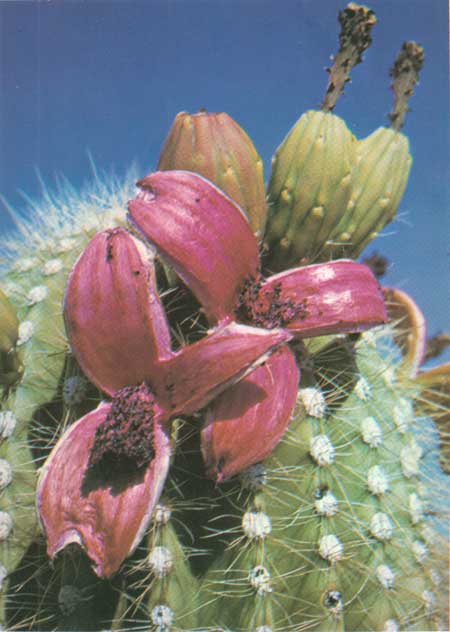|
SAGUARO
Ecology of the Saguaro: II NPS Scientific Monograph No. 8 |

|
PREFACE
As a direct result of the criteria used in the selection of natural features and phenomena for designation as National Parks and National Monuments, the National Park Service has inadvertently acquired unique problems with respect to maintaining the living natural resources assigned to its custody. This is especially true with regard to those National Park Service areas that were selected because of the unique qualities of specific plant populations.
The very qualities that made these plant populations attractive, unique, or superlative examples of their kind, were the unrecognized expression of exceptional conditions, i.e., atypical environments within the overall species range in space or time. Thus the National Park Service has been entrusted with the care of plant populations that are the resulting relicts of past climatic conditions, such as redwoods and sequoias, or that are situated near the critical geographic limits of the species distribution such as saguaros.
Instability is a primary characteristic of such populations responding—often in a dramatic manner—to a constantly changing climatic environment. Such is the prevailing condition of the saguaro populations at Saguaro National Monument and elsewhere along the margins of its distribution in Arizona and northern Sonora. It is within this context that we have examined and report here on the question of the factors concerning the germination, establishment, growth, and survival of the saguaro to the age of first reproduction. It is within this same context that we offer recommendations for the management of these populations.
This volume is Part II of reports on our continuing investigations on a particularly sensitive and responsive plant population in the Sonoran Desert. Part I (Steenbergh and Lowe 1976) concerns the role of freezing weather on saguaro populations along the eastern and northern margins of saguaro distribution in Arizona and northern Sonora. In Part II, this report, we offer results and conclusions on our experiments and observations on the reproduction, germination, establishment, growth, and survival of the young saguaro to the age of first reproduction.
In Appendix I we offer management recommendations based on our investigations. These will be of interest to the National Park Service not only in relation to the management and interpretive programs at Saguaro National Monument but also at the three other National Park Service areas in Arizona where responsive populations of the saguaros and other warm desert plant species also occur—Casa Grande National Monument, Tonto National Monument, and Organ Pipe Cactus National Monument. In Appendix II we provide for the benefit of others with an interest in the ecology and history of the saguaro, a revised version of the earlier bibliography by Steenbergh (1974).
Scientific and vernacular names generally follow Kearney and Peebles (1969) for plants, except for cacti for which we follow the classification used by Benson (1969). Nomenclature for birds is from Monson and Phillips (1964); mammals from Hall and Kelson (1959), see also Cockrum (1960, 1964).

|
| Frontispiece: Ripe fruits of the saguaro giant cactus. These are the "red flowers" of the saguaro originally described by Dr. C. C. Parry reporting on an expedition down the Gila River in 1852. The flowers—white, not red—appear on the lips of stem and branches in late spring and early summer the fruits ripen in June and early July. |
| <<< Previous | <<< Contents >>> | Next >>> |
preface.htm
Last Updated: 21-Oct-2005